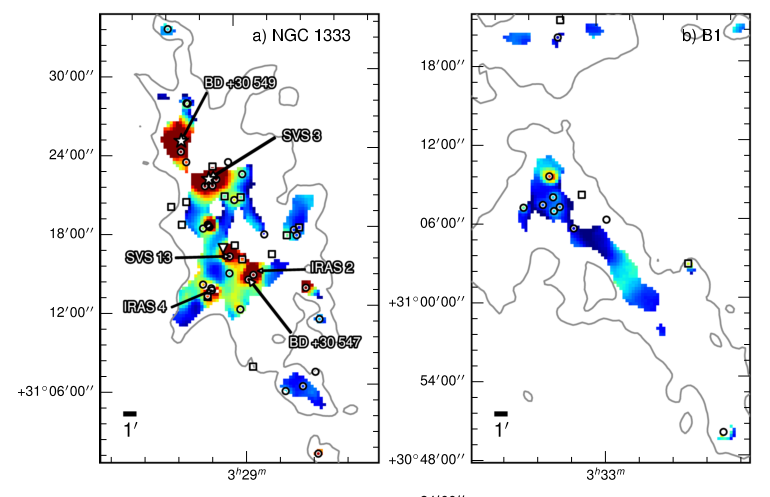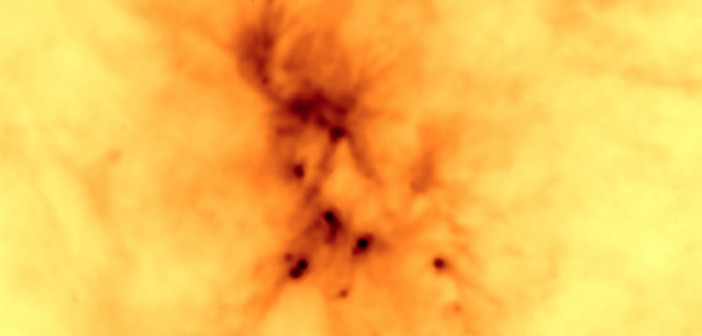Editor’s note: Astrobites is a graduate-student-run organization that digests astrophysical literature for undergraduate students. As part of the new partnership between the AAS and astrobites, we will be reposting astrobites content here at AAS Nova once a week. We hope you enjoy this post from astrobites; the original can be viewed at astrobites.org!
Title: The JCMT Gould Belt Survey: Evidence for Dust Grain Evolution in Perseus Star-forming Clumps
Authors: Michael Chun-Yuan Chen, J. Di Francesco, D. Johnstone, et al.
First Author’s Institution: University of Victoria
Status: Published in ApJ
Deep in the cold and dusty corners of the universe, baby stars are formed. When a molecular cloud (aka an interstellar dust bunny) made out of gas and small dust particles reaches a critical density, it begins to form protostars as the gas in the cloud gravitationally collapses. Scientists can study these stellar nurseries to understand how gas is transformed into giant stars. Unfortunately, molecular hydrogen, which composes ~99% of a molecular cloud, is hard to measure at the low temperatures at which clouds form. Instead, the dust in the clouds is studied, as it behaves in a manner similar to the gas.
Recently, Mike Chen and his collaboration investigated several stellar nurseries in one molecular cloud, Perseus, in order to map the temperature and other parameters that they use to understand the evolution of dust grains in the regions. They look primarily at the regions’ temperatures and a parameter called the dust emissivity spectral index, or beta. This index is critical to estimating the mass and temperature of the star-forming structure and is dependent on the properties of the dust grains, like size and composition.
Using the JCMT sub-millimetre telescope, the group derived maps for temperature, dust emissivity spectral index and optical depth (i.e. how well you can see through it). Plotting known stars and young stellar objects on the map, they were able to see relations between these objects and the dust grain properties. The results from the temperature maps showed distinct warm regions within the clouds — though by warm we only mean about 15 K (-430°F). Most of the areas that had above average temperatures also had a young stellar object, which is likely responsible for the region’s extra warmth. However, not all regions containing young stellar objects were warm. It could be that these regions contain particularly infant objects that haven’t yet had the time to warm their dust blankets.

Temperature maps for two dense regions in the Perseus molecular cloud. Red indicates higher temperatures and blue, colder. Circles, triangles and stars indicate young stellar objects and stars. [Chen et al. 2016]

Dust emissivity maps for two dense regions in the Perseus molecular cloud. Yellow indicates regions with higher emissivity index and blue, lower. Circles, triangles and stars indicate young stellar objects and stars. [Chen et al. 2016]
About the author, Mara Johnson-Groh:
Mara is working on her master’s at the University of Victoria, Canada. In a nutshell, her research is taking pretty pictures of the universe. She spends half of her time with the Gemini Planet Imager Exoplanet Survey team trying to directly image new exoplanets, and the other half looking for galaxies responsible for damped Lyman alpha systems in the images of quasars. When she’s not looking at scientifically pretty pictures, she’s capturing earthly beauty with digital photography or trying to stay grounded with rock climbing.


1 Comment
Pingback: ISM dust grain evolution